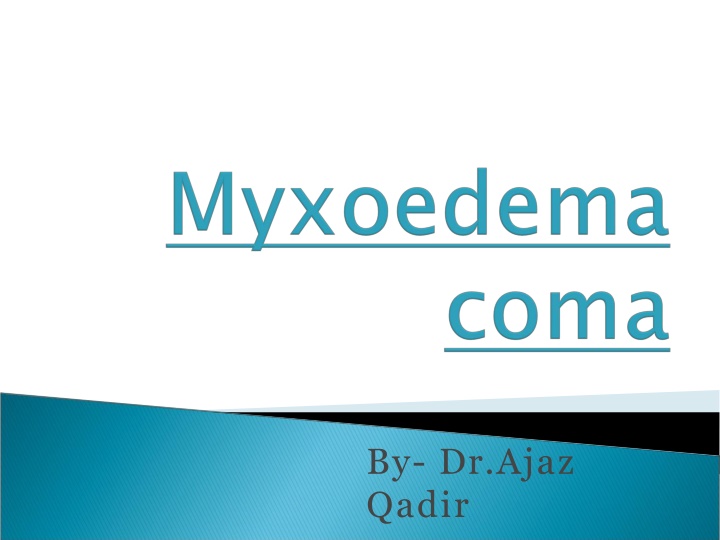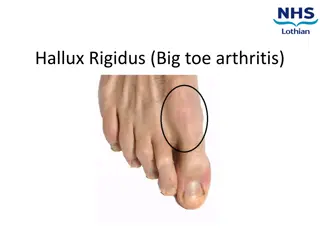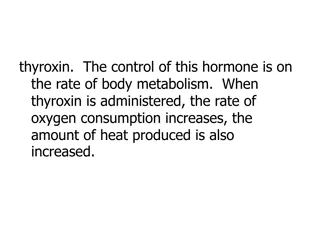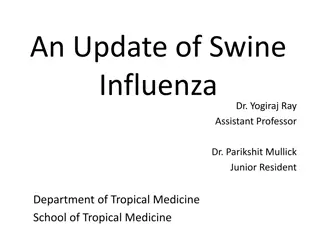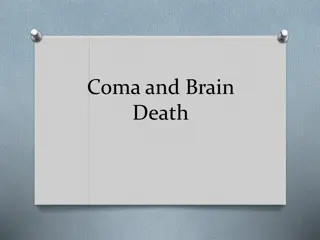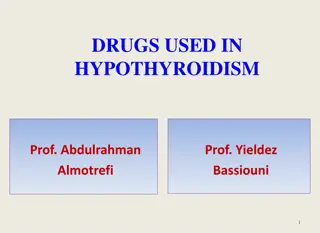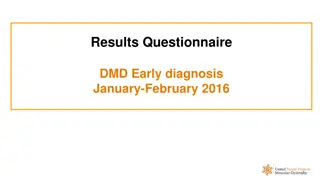Myxedema Coma: Symptoms, Diagnosis, and Management
Myxedema coma is a rare, life-threatening condition associated with decompensated hypothyroidism. It presents with altered mental status, low body temperature, and various metabolic abnormalities. This article explores the primary symptoms, differential diagnosis, and management of myxedema coma based on a case study of a 65-year-old woman presenting to the emergency department. Learn about the key features, diagnostic approach, and potential differential diagnoses to consider in such cases.
Download Presentation

Please find below an Image/Link to download the presentation.
The content on the website is provided AS IS for your information and personal use only. It may not be sold, licensed, or shared on other websites without obtaining consent from the author.If you encounter any issues during the download, it is possible that the publisher has removed the file from their server.
You are allowed to download the files provided on this website for personal or commercial use, subject to the condition that they are used lawfully. All files are the property of their respective owners.
The content on the website is provided AS IS for your information and personal use only. It may not be sold, licensed, or shared on other websites without obtaining consent from the author.
E N D
Presentation Transcript
By- Dr.Ajaz Qadir
coma is a state of Myxedema decompensatedhypothyroidism. A person may have lab values identical to a "normal" hypothyroid state, but a stressful event precipitates the myxedema comastate.
Primary symptoms of myxedema comaare altered mental status low body temperature. Low bloodsugar, low blooodpressure, hyponatremia , hypercapnia, hypoxia, slowed heart rate, and hypoventilation m
Myxedema coma was first reported by Ord in 1879 in London. It is a rare disorder, with only approximately 300 cases described in the literature typically elderly females have longstanding, undiagnosed hypothyroidism More than 90% of cases occur during winter months
A 65-year-old woman with no known past medical history is brought to the emergency department with altered mental status. On arrival, the patient butarousable. Patientdetailes R.R =15b/m O2 = 92% Na = 128 mEq/L pH-7.23 paCO2-63.7 paO2-71.2 R.A
Examination generalized puffiness, periorbital edema,ptosis, macroglossia, and her extremities are dry and cool with nonpittingedema. INVESTIGATION
The differential diagnosis of myxoedema coma will includes other causes of a deterioration in mental state: Hypothermia. Septicshock. Psychiatricdisorders Dementia (including Alzheimer's disease),Depression Changes in mental state secondary to other medical conditions and drugs,Hypoglycaemia (mayco-exist) Encephalitis and meningitis, Hepatic encephalopathy , Cerebrovasculardisease.
Admit to intensive care unit for continuous monitoring of cardiovascular and pulmonarystatus Supportivecare ABCmeasures Treat hypothermia with passive rewarming Treat hyponatremia with normal saline and free- waterrestriction
Thyroid hormone treatment Levothyroxine(T4) Loading dose: 300 to 400 g IV then 50 to 100 g IVdaily until oral medication can begiven If suboptimal response consider concurrent liothyronine (T3): 5 g IV every 8hr
Corticosteroidtherapy First draw baseline cortisol level and start hydrocortisone 100mg IV , followed by 50 mg IV every 6 to 8hr Follow-up steroid therapy:
